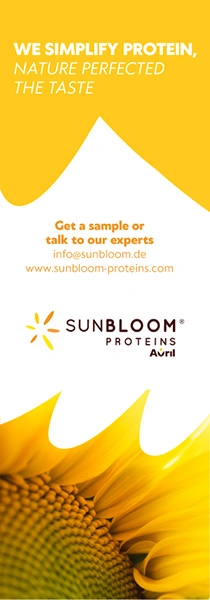
- Industry news
Industry news
- Category news
- Reports
- Key trends
- Multimedia
Multimedia
- Journal
- Events
- Suppliers
Suppliers
- Home
- Industry news
Industry news
- Category news
- Reports
- Key trends
- Multimedia
Multimedia
- Events
- Suppliers
Suppliers
Erucic Acid Poses Potential Child and Animal Safety Hazard

10 Nov 2016 --- The European Food Safety Authority (EFSA) have announced that erucic acid, a naturally occurring contaminant present in vegetable oil, could pose long-term health risks to children up to 10 years of age who consume high amounts of foods containing the substance.
EFSA also found that levels of erucic acid present in animal feed may be a health risk for chickens.
A monounsaturated omega-9 fatty acid, Erucic acid is present in the oil-rich seeds of the Brassicaceae family of plants, particularly rapeseed and mustard. It mainly enters the food chain when rapeseed oil is used in industrial food processing and home cooking in some countries.
Most commonly, it is used in foods such as pastries, cakes and infant/follow-on formulae and also in some animal feed.
Although natural forms of rapeseed and mustard contain high levels of erucic acid (over 40% of total fatty acids), levels in rapeseed cultivated for food use are typically below 0.5%.
In 1976 the EU set maximum limits for erucic acid as a contaminant in vegetable oils and fats, and foods containing added vegetable oils and fats as an ingredient.
Also, specific maximum limits for infant formulae and follow-on formulae were set five times lower than for other foods.
However, EFSA was asked for a new risk assessment as part of a review of these maximum levels.
Heart condition tests on animals show that ingesting oils containing erucic acid over time can lead to a heart condition called myocardial lipidosis, a temporary and reversible condition.
Other potential effects observed in animals, including changes in the weight of the liver, kidney and skeletal muscle, occur at slightly higher doses.
Based on this information, experts on EFSA’s Panel on Contaminants in the Food Chain (CONTAM Panel) established a tolerable daily intake of 7 milligrams per kilogram of body weight (mg/kg bw) per day
Average consumer exposure ranges from 0.3 to 4.4 mg/kg bw per day across age groups, but among consumers with higher exposure are infants and other children who could be exposed to up to 7.4 mg/kg bw per day.
The experts noted however that they are likely to have overestimated this risk to account for limitations in the available scientific information.
For most consumers, especially for toddlers and other children, the main contributors to erucic acid exposure in the diet are pastries, cakes and biscuits. For infants, infant formulae is the main source.
The CONTAM Panel’s scientific opinion also covers the risks for animal health from exposure to erucic acid, with the EFSA experts saying there may be a health risk for poultry, but noted that the calculation method used overestimated exposure.
The panel have recommended further data collection on erucic acid concentrations in processed foods such as fine bakery wares and food for infants and small children, adding that levels in animal-derived products (meat, milk, eggs) transferred through animal feed would also be useful.
New toxicity studies could also improve understanding on the effects for humans and animals, particularly for target livestock animals and fish.











